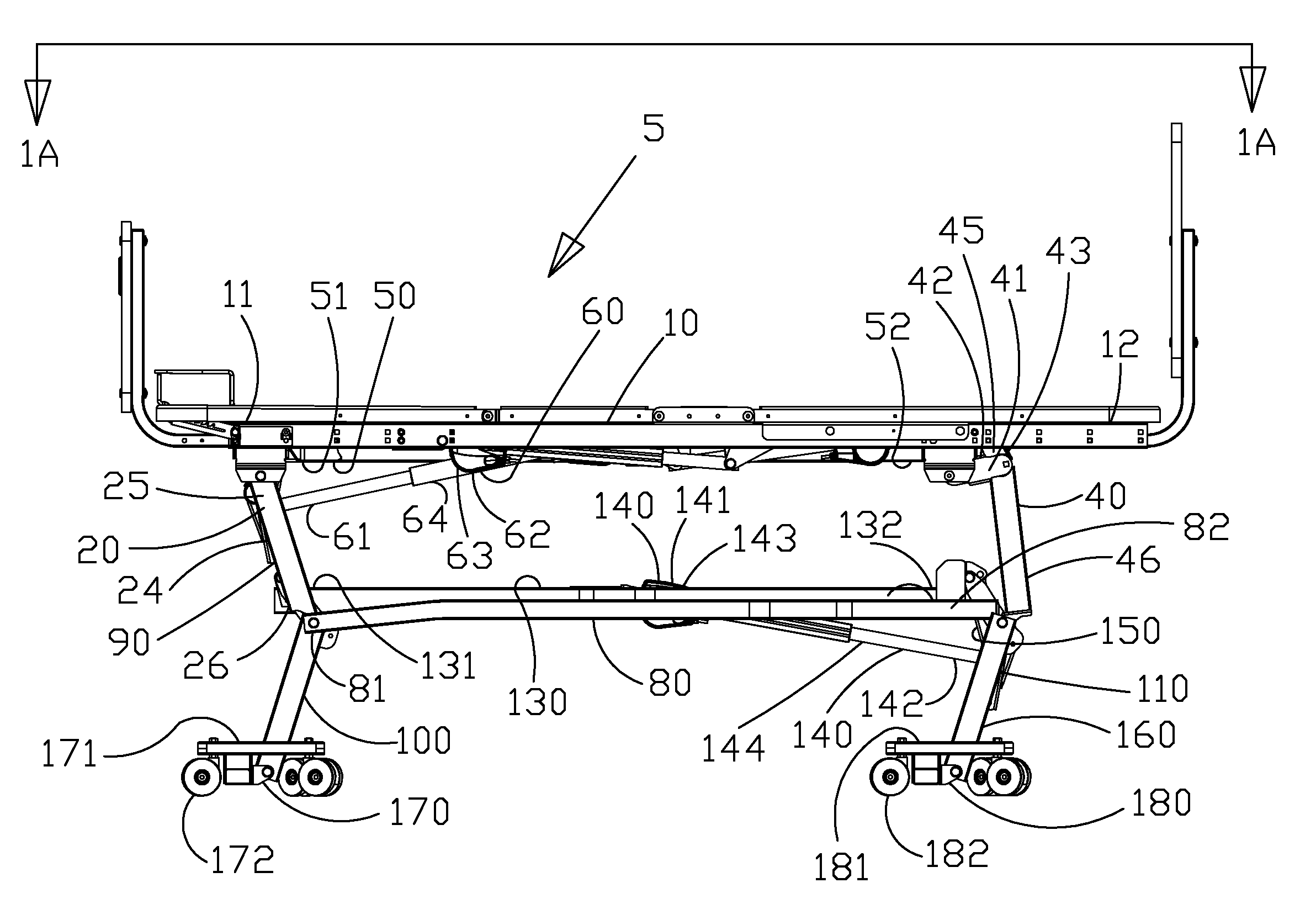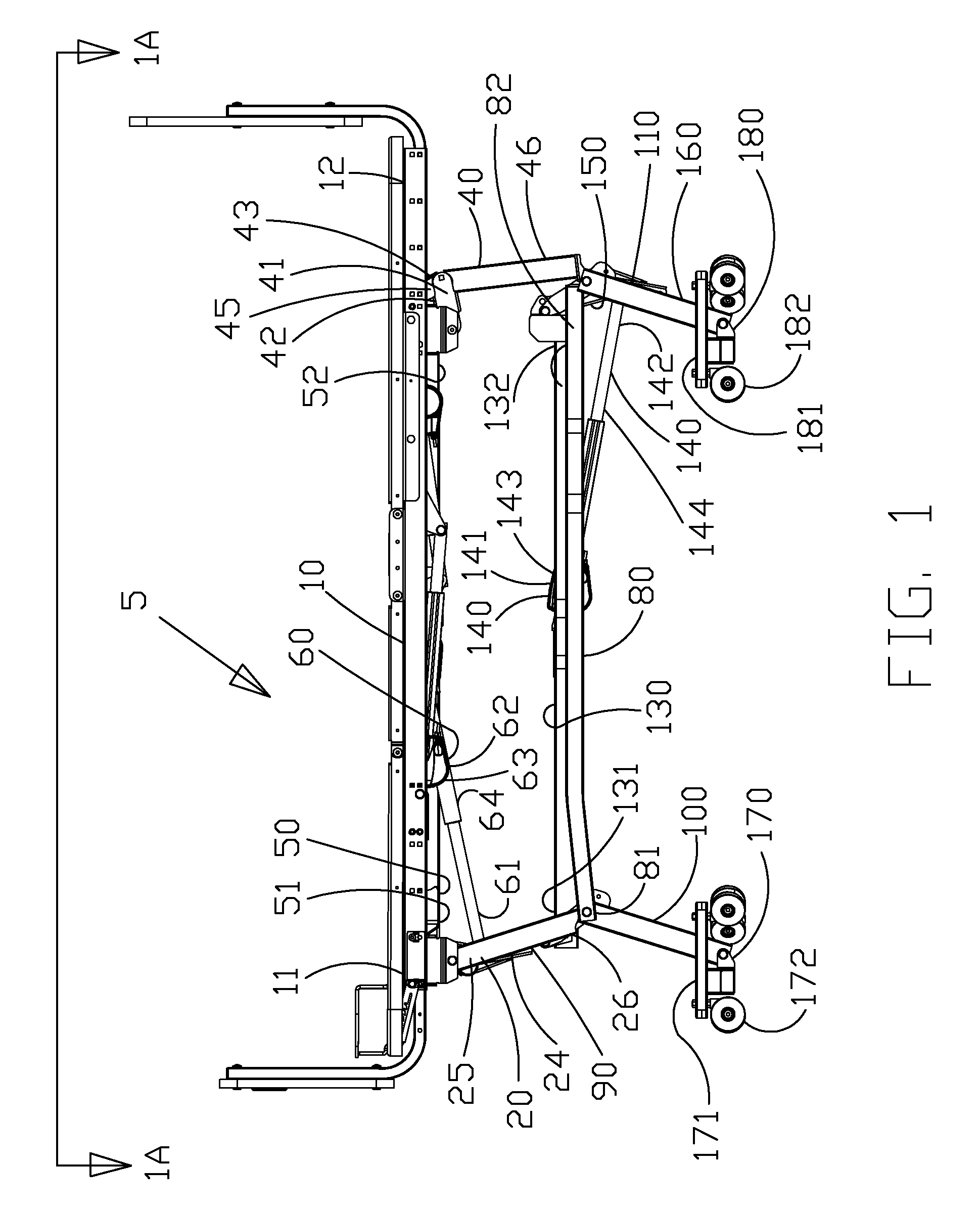Height adjustable apparatus with control arm
a technology of height adjustment and control arm, which is applied in the field of apparatus, can solve the problems of mechanical disadvantage of the actuator, unexpected failure of components, damage or injury, etc., and achieve the effects of reducing risk or injury, general vertical rise, and fast rise and fall ra
- Summary
- Abstract
- Description
- Claims
- Application Information
AI Technical Summary
Benefits of technology
Problems solved by technology
Method used
Image
Examples
Embodiment Construction
[0044]While the invention will be described in connection with several preferred embodiments, it will be understood that it is not intended to limit the invention to those embodiments. On the contrary, it is intended to cover all alternatives, modifications and equivalents as may be included within the spirit and scope of the invention as defined by the appended claims.
[0045]A bed 5 is provided according to one embodiment of the present invention as shown in FIGS. 1-10. The bed 5 has a main-frame and deck, hereafter referred to collectively as a deck 10. The deck 10 has a first end 11 and a second end 12.
[0046]A first lever 20 is preferably at the first end 11 of the deck 10. The first lever 20 has arms 21, 24 and 27. The arms 21, 24 and 27 are rigidly connected to a cross-beam. The arms 21, 24 and 27 rotate about a central axis at the same rate. The cross-beam need not be concentric with the central axis. Arm 21 has a first end 22 and a second end 23. Arm 24 has a first end 25 and ...
PUM
 Login to View More
Login to View More Abstract
Description
Claims
Application Information
 Login to View More
Login to View More - R&D
- Intellectual Property
- Life Sciences
- Materials
- Tech Scout
- Unparalleled Data Quality
- Higher Quality Content
- 60% Fewer Hallucinations
Browse by: Latest US Patents, China's latest patents, Technical Efficacy Thesaurus, Application Domain, Technology Topic, Popular Technical Reports.
© 2025 PatSnap. All rights reserved.Legal|Privacy policy|Modern Slavery Act Transparency Statement|Sitemap|About US| Contact US: help@patsnap.com



